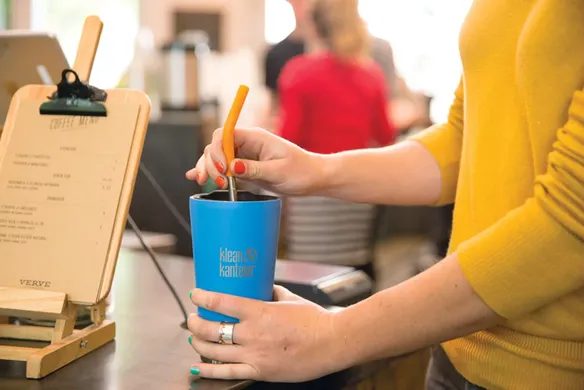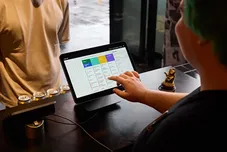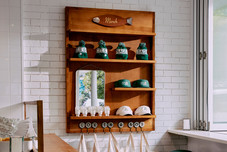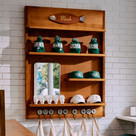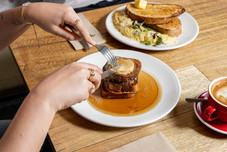Table of contents
You may have noticed some news articles about plastic straw bans lately. The small, seemingly harmless utensil that goes generally unnoticed in your everyday life has made it onto the environment’s most-wanted list.
If it’s surprising to hear that single-use plastic straws are receiving backlash, it may be even more surprising to hear that, according to a 2017 study from researchers at the University of California, Santa Cruz, a whopping 91 percent of the plastic we use is not recycled and instead ends up in landfills or the ocean.
Because of these types of statistics, some territories and corporations are starting to make efforts to fight pollution. A part of that is proposing to ban or cut back on single-use plastic straws.
In 2019, Hobart was the first Australian capital city to ban the use of plastic straws for vendors in the city, as well as plastic stir sticks and utensils. Compostable drinking straws made from paper or plastic are still allowed. Other areas of Australian have begun to follow suit as States and Territories have also banned single-use plastics, with Queensland the latest state looking to investigate a plastic straw ban.
Starbucks was one of the first globally recognised brands to announce that it has moved away from plastic straws. In addition to switching to compostable drinking straws, the company has released a strawless drink lid design on its regular cold-drink cups.
McDonald’s Australia committed this year to removing plastic cutlery and straws across it’s Aussie stores. This move by Macca’s will result in removing 860 tonnes of plastic from their restaurants.
These big cities and large corporations taking action helps bring attention to the issue and start a conversation about how harmful plastic straws, and plastic as a whole, are to the environment.
Moving away from plastic straws and moving towards a plastic straw ban in Australia is undoubtedly good for the environment, but it may present some challenges for Aussie business owners. Learn why single-use plastic and straws are being banned, what their environmental impact is, and what your options are when it comes to finding the right alternative for your business.
Why straws?
Based on the amount of media attention plastic straw bans have generated in the past few years, it may be surprising to hear they are not the leading type of plastic waste. That record goes to food wrappers and containers, which account for about 31 percent of all plastic pollution. They are followed by plastic bottle and container caps at 15.5 percent, plastic bags at 11.2 percent, and then finally plastic straws and stirrers at 8.1 percent.
The main reason cited for enacting plastic straw bans is the negative impact straws have on our oceans and marine wildlife. Plastic in the ocean is a huge problem — look no further than trash island, or the viral video of a turtle suffering as a result of ocean pollution, to understand that. But of all the plastic that ends up in the ocean, straws make up only four percent of that waste.
So why are straws a big target? The problem with plastic straws is their size. They are small and inconspicuous. So much so that people often forget they are plastic and do not recycle them.
Straws that do get recycled often don’t make it through the mechanical recycling sorter because they are so small and lightweight. So they contaminate recycling loads or get disposed of as garbage.
It is estimated that Australians use 10 million single-use plastic straws per day. That means that if Aussies stop using straws, we would eliminate 3.5 billion straws per year and prevent them from entering oceans and harming wildlife.
So, knowing that most straws, recycled or not, are likely to end up in our oceans, and knowing the amount of straws being used every day, individuals cutting back on use can make a difference.
How did we get here?
How did one small part of a very large problem kick off a movement that has inspired cities to ban plastic straw use altogether?
Let’s start at the beginning.
Plastic straws are not the first iteration of straws. It started with cardboard straws, but once plastic production of straws increased, people realised it was quicker and cheaper to produce plastic straws. Starting in the 1960s, plastic straw manufacturing took off.
From there, a number of large manufacturers started to produce single-use plastic straws and other on-the-go convenient plastic items that were increasingly in demand. Quickly, the industry as a whole started producing more plastic, and by 2015 the world was producing 322 million tons of plastic.
Now, we are faced with having to backtrack and try to reduce the damage that years of plastic overproduction have done.
The problem with plastic straws is that, while convenient, plastic is not biodegradable — it does not break down into compounds (like carbon dioxide or water) that can be easily reused. Therefore, it takes years to break down plastic particles. Because of this, when plastic is not recycled and ends up in the ocean, it stays there, forever.
Based on an analysis of trash collected on Australian coastlines during cleanups over two years, it was found that nearly 75 percent of the debris was made from plastic materials. Overall, there are figured to be about 437 million to 8.3 billion plastic straws on the entire world’s coastlines. And since they are not biodegradable, they are not going anywhere.
We know that single-use plastic straws are only 4 percent of all pollution on the planet, which puts into perspective just how much plastic is laying around.
So, while straws are a small place to start, movements like plastic straw bans bring attention to conversations about waste management and pollution. This movement can help people become more aware of the impact that everyday plastic products have on the sustainability of the planet. That can, in turn, hopefully help us make progress in reducing the amount of plastic waste in the world.
That isn’t to say it will be an easy process. While the recent plastic straw bans have been met with a lot of enthusiasm, communities that rely on single-use plastic straws and use them on a regular basis are worried about what these changes mean for them.
What’s the impact on communities and businesses?
While the plastic straw ban in Australia is undoubtedly good for the environment, the earth isn’t the only thing that will be affected.
As plastic straw bans have grown and straws have started slowly disappearing from everyday life, disability advocates have started speaking out. Those with certain disabilities often rely on straws to consume food and beverages, and broad plastic straw bans don’t seem to take people with disabilities in their communities into consideration.
Some government officials, like those in South Australia, have said they are modelling the planned plastic straw ban after those overseas that have had success, but they would also consult those with disabilities during the process.
And business owners who live in places with single-use plastic bans will also need to adapt to providing more sustainable options for their customers (while making sure that there are options for all their customers).
The original draw of single-use plastic was how cheap it is to produce these products on a mass scale. With the new plastic straw bans in Australia, businesses that once used cheap plastic straws are now having to adjust financially to pressure from their customers and the world to provide alternatives.
What are the alternatives?
Luckily, plenty of sustainable brands are ahead of the trend and producing plastic alternatives.
Square seller Klean Kanteen — whose mission is to make the highest-quality reusable products on the planet to keep single-use plastic waste from trashing the world — is excited that more businesses and consumers are moving away from plastic straws.
“It’s incredible to see this movement grow and reach the masses in the way that it has. The conversation and awareness has snowballed and we love it because the straws are introducing us to an entirely new audience,” said Brendan Fay, Klean Kanteen’s social media manager.
There are a handful of solutions to plastic straws available today. The most popular include:
Compostable straws
The straw option you’ll likely start seeing the most in restaurants and from major food corporations is compostable straws that look and feel similar to the single-use plastic straws you’re used to.
It is important to note that emerging research suggests that compostable plastic straw alternatives are not as eco-friendly as we thought. This is mainly chalked up to the fact that compostable straws do not biodegrade any quicker than traditional plastic straws, unless they are disposed of in a commercial composter.
Cardboard and paper straws
Before there were plastic straws, there were paper straws. In fact, Marvin Stone created the very first straw by wrapping pieces of paper around a tube and glueing the pieces together. Paper straws, such as BioPak Straws, decompose in 45–90 days and provide an eco-friendly alternative to plastic straws.
Another draw of paper straws is that companies have started printing different designs on the straws to create more variety and themes for consumers.
Glass straws
While not the best for travelling, glass straws have also become a popular substitute for plastic straws. And companies like Seastraws have created glass straws with or without travel cases for those who want options.
Silicone straws
BPA-free silicone straws, made from food-grade silicone, are another straw alternative gaining popularity. Reusable straws Australia, like the silicone kind Ever Eco produces, are also a good option for kids who like to chew on their straws.
Metal straws
Due to how long they can last, metal straws are considered one of the most eco-friendly options for straw alternatives. Companies like Biome sell metal straws in various colours and with or without a bend.
![]()

